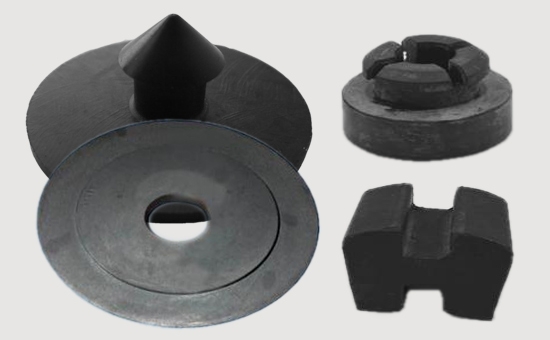
The so-called vulcanization inversion is the phenomenon that the thermal degradation of the sulfur crosslinks leads to the decline of the physical properties of the vulcanizate and the deterioration of the use performance. When natural rubber products choose the common sulfur vulcanization system, due to the poor thermal conductivity of the rubber material, it is necessary to increase the vulcanization temperature or prolong the vulcanization time. Improper operation will lead to serious oversulfurization of certain parts and reversion of vulcanization. Therefore, certain measures should be taken in the production process of natural rubber products to eliminate the phenomenon of reversion.
1. Reasonably design the curing system
When using natural rubber to produce rubber products, manufacturers should choose a suitable vulcanization system according to actual needs, which can avoid or reduce reversion of vulcanization. In actual production, polysulfide bonds are easy to break at high temperatures, leading to modification of the main chain. Therefore, common sulfur vulcanization system vulcanizates with polysulfide bonds as the main component are prone to reversion. For natural rubber products, choosing a low-sulfur and high-promoting semi-effective vulcanization system or an effective vulcanization system can improve the heat resistance of the rubber and reduce the reversion of vulcanization.
Use sulfur donor to replace part of sulfur, or use peroxide-sulfur/accelerator vulcanization system, thiuram accelerator/sulfenamide accelerator to effectively eliminate and reduce the high temperature vulcanization reversion of natural rubber.
2. Adjust the vulcanization conditions appropriately
Accurate calculation of vulcanization time and vulcanization temperature through experiments, especially for thick rubber products, the principle of time-temperature equivalence can be used to calculate the equivalent vulcanization time of natural rubber at a specific temperature to determine the appropriate vulcanization conditions.
3. Use special additives
In the production process of natural rubber products, rubber product manufacturers can choose appropriate post-vulcanization stabilizers, anti-reversion agent 2LLYY1217, etc. to improve the anti-reversion performance of natural rubber. Common post-vulcanization stabilizers include HTS, and anti-reversion agents include perkalink900, zinc dialkyl polythiophosphate, acrylates, imide compounds, etc.
4. Use other types of rubber together
In the formulation of rubber products with natural rubber as the main raw material, using a proper amount of butadiene rubber, styrene butadiene rubber and other rubbers with excellent anti-reversion properties can reduce the reversion of natural rubber. In actual production, rubber product manufacturers can also use appropriate amounts of reclaimed rubber in the formulation of natural rubber products to significantly improve the vulcanization performance of natural rubber products. Commonly used are latex reclaimed rubber and tire reclaimed rubber to reduce natural rubber vulcanization.
Natural rubber products manufacturers can effectively eliminate or reduce the reversion of vulcanization by balancing the vulcanization system, adjusting the vulcanization conditions, using special substances appropriately, and using other types of rubber when necessary. In actual production, rubber product manufacturers can also take certain measures to reduce the heat build-up of natural rubber, adjust the vulcanization speed and compatibility of different parts of the rubber, and further reduce/eliminate the reversion of natural rubber.
Exclusive original article [commercial authorization] reprint, excerpt and excerpt in any form are prohibited without written authorization. Focus on Hongyun rubber: learn the process formula and raw material technology of producing rubber products from recycled rubber to help you reduce costs and increase profits